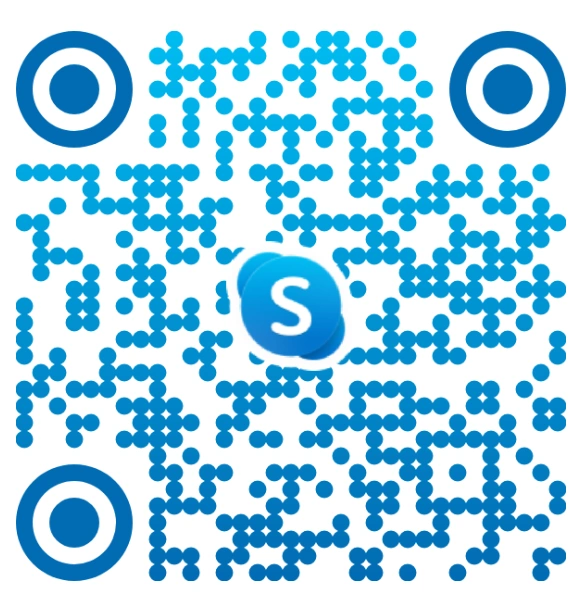LLMs vs Generative AI: Understanding the Overlap and Differences
Introduction
The rapid evolution of artificial intelligence has sparked growing interest in two powerful technologies: generative AI and large language models (LLMs). While these terms are often used interchangeably, they represent distinct yet overlapping innovations with unique roles in the AI ecosystem. Understanding the difference between Generative AI and LLMs is essential for businesses, developers, and decision-makers navigating today’s AI-driven world.
Generative AI is a broad category of models that can create new content text, images, code, or audio, by learning from existing data. In contrast, LLMs are a specialized subset of generative models focused specifically on language. Trained on massive volumes of text, they excel at tasks such as drafting content, answering questions, and powering conversational tools across various industries.
According to McKinsey, Generative AI could contribute up to $4.4 trillion to the global economy annually, with LLMs driving much of that value through automation of language-based processes. Whether you’re exploring the best AI language models, comparing LLM vs Generative AI, this guide will help you understand where these technologies intersect and where they diverge.
What is Generative AI?
Generative AI refers to a class of artificial intelligence that can create new content, text, images, music, video, and code by learning patterns from existing data. Unlike traditional AI models that are often focused on prediction or classification, Generative AI Solutions are designed for creativity and synthesis.
These models can:
- Generate human-like text
- Create original artwork
- Compose music
- Simulate realistic conversations
- Write and debug code
At its core, Generative AI learns from massive datasets and produces outputs that are not directly copied but creatively inferred, making it ideal for innovation, automation, and personalization.
Applications Across Domains
Generative AI has found applications in many fields:
- Text: Content creation, summarization, translation, and customer support
- Image: Art generation, design mockups, facial synthesis
- Audio: Voiceovers, music generation
- Code: Automated code completion, refactoring, testing
- Business: Personalized marketing, report generation, and virtual assistants
These diverse capabilities make Applications of Generative AI in Business especially impactful for industries looking to scale operations with minimal manual input.
Examples of Generative AI Models
Some popular Generative AI Models for Language and other modalities include:
- DALL·E (images)
- Midjourney (art)
- GitHub Copilot (code)
- Bard (text)
- ChatGPT (multi-modal)
- RunwayML (video editing)
Many of these models are based on foundation models, large neural networks trained on a broad range of data, including Generative Language Models like GPT (Generative Pretrained Transformer).
What are Large Language Models (LLMs)?
A Large Language Model (LLM) is a subset of Generative AI specifically focused on understanding and generating human language. Built using deep learning techniques (typically transformer architectures), LLM AI models are trained on vast amounts of textual data. An LLM in Generative AI learns grammar, context, facts, reasoning patterns, and even style, enabling it to generate coherent and meaningful text responses.
LLMs can:
- Answer questions
- Write articles, emails, or essays
- Translate languages
- Summarize documents
- Engage in conversations
They also use tools like virtual assistants, search engines, and customer service bots. Thanks to fine-tuning and instruction-following capabilities, LLMs and Generative AI together have transformed human-computer interaction.
Popular LLM Examples
Some of the most widely known LLM Generative AI models include:
- GPT series (OpenAI): e.g., GPT-4
- PaLM (Google): Pathways Language Model
- Claude (Anthropic): Constitutional AI principles
- LLaMA (Meta): Lightweight and open-source
These models are examples of Large Language Models in AI that showcase the full potential of language understanding and generation.
Also Read : How to Choose the Right LLM for Your Business Needs
Generative AI vs LLMs: Key Differences
Although they often work in tandem, Generative AI vs LLMs show important differences across several technical and functional areas. Below is a detailed comparison to help you understand where they align and where they differ.
| Feature | Generative AI | LLMs |
| 1. Functionality | Generates diverse content (text, images, audio, video) | Specializes in text generation and understanding |
| 2. Architecture | GANs, VAEs, Diffusion, Transformers | Transformer-based (decoder-only) |
| 3. Modality | Multimodal: image, video, audio, 3D, text | Text-first, some are now multimodal |
| 4. Input/Output | Input: any; Output: varies (image, sound, etc.) | Input/output: always text |
| 5. Training Data | Labeled or paired datasets by type | Massive unlabeled text corpora |
| 6. Use Cases | Art, media, gaming, design tools | Chatbots, search, summarization, coding |
| 7. Output Control | Controlled via style prompts, masks, etc. | Prompt-based guidance, less precise control |
| 8. Inference Cost | High (especially for image/video models) | Moderate, can be optimized for real-time |
| 9. Evaluation | Visual metrics (FID, IS, CLIP score) | Language metrics (BLEU, ROUGE, MMLU) |
| 10. Adaptability | Needs model-level retraining | Flexible with prompt tuning or fine-tuning |
1. Functionality
Generative AI produces diverse content, text, images, audio, and video across formats. In contrast, LLMs specialize in language-based outputs. This marks a key distinction in Generative AI vs LLMs functionality.
2. Architecture
Generative AI models use various architectures like GANs, VAEs, or Transformers. However, LLM AI models almost always rely on Transformers, optimized for natural language understanding and generation.
3. Modality
A major difference in Generative AI vs LLMs is modality. Generative AI is multi-modal, while LLMs are unimodal, focused only on understanding and generating human language.
4. Input/Output
Generative AI handles multiple input types, images, audio, and prompts, and returns varied outputs. LLMs take text prompts and generate coherent text responses, making them effective for language-centric tasks.
5. Training Data
Generative AI can be trained on mixed datasets, text, images, and audio. LLMs, in contrast, are trained exclusively on large textual corpora from books, websites, and online documents.
6. Use Cases
Use cases highlight the difference between Generative AI and LLMs. Generative AI is used for design, media, and art, while LLMs power chatbots, translators, and content generation tools.
7. Output Control
LLMs offer better output control via prompt engineering and fine-tuning. Generative AI models, especially in non-text formats, need additional tuning to produce consistent and desirable results.
8. Inference Cost
LLMs require more compute power due to token-based processing, increasing inference cost. Some Generative AI models, such as GANs, are lighter depending on the specific task or output.
9. Evaluation
LLMs use clear NLP metrics like BLEU or ROUGE for evaluation. Generative AI outputs, especially in visual or audio formats, are often judged subjectively with limited standardization.
10. Adaptability
Both are adaptable. Generative AI retrains on specific domains like medical imaging, while LLMs support fine-tuning, few-shot, or zero-shot learning for flexible task adaptation.
Where Generative AI and LLMs Overlap
Despite their differences, Generative AI and Large Language Models often intersect. Here are a few key areas of overlap:
1. Text Generation
Both are used to produce human-like language content, from blog posts to legal documents.
2. Conversational Interfaces
LLMs power chatbots, while Generative AI with LLMs supports virtual agents that combine text, emotion, and even voice.
3. Multi-modal Expansion
Models like GPT-4 and Gemini show how LLMs are evolving into multi-modal generative models, blending images, text, and speech.
4. Foundation Models
Many LLMs are part of broader foundation models, designed to adapt across different tasks and domains.
5. Code Generation
LLMs and Generative AI are both instrumental in coding assistants like GitHub Copilot or CodeWhisperer.
6. Creative Workflows
They are increasingly embedded in tools for writing, composing, and designing, transforming industries from publishing to advertising.
Also Read : How Generative AI Is Reshaping Digital Transformation for Enterprises
Strengths and Limitations of GenAI and LLMs
As organizations evaluate Generative AI vs LLMs, it’s important to weigh their strengths and limitations. While both are powerful tools, their capabilities, control mechanisms, and ideal applications differ significantly, making the choice especially critical when developing tailored AI solutions for startups.
LLMs (Large Language Models)
Advantages of LLMs
- Strong command of grammar, syntax, and linguistic context
- Ideal for summarization, translation, Q&A, and document generation
- Supports fine-tuning, prompt engineering, and instruction tuning
- Useful across industries for chatbots and content workflows
- Continually improving with newer foundation models and techniques
Limitations of LLMs
- May hallucinate or generate inaccurate information
- Struggles with tasks requiring reasoning, logic, or math
- Limited to text (unimodal), no visual or audio understanding
- High computational cost for inference at enterprise scale
- Requires careful prompt design to steer outputs effectively
Generative AI
Advantages of Generative AI
- Multi-modal generation: supports text, images, video, and audio
- Enables creativity in design, marketing, and entertainment
- Applicable in diverse fields from synthetic media to prototyping
- Allows flexible architectures like GANs, VAEs, and Transformers
- Not limited to language, can simulate or synthesize non-text content
Limitations of Generative AI
- Outputs can lack precision or be hard to validate
- Evaluation is subjective, especially for creative outputs
- Requires heavy tuning for reliable control in generation
- Domain-specific data is often needed for high-quality results
- Some models (like GANs) are unstable or harder to train
LLM vs. Generative AI: Choosing the Right Fit
Selecting between LLMs and Generative AI depends on the type of content you need, your business goals, and the media formats involved. Each has its strengths, and the best fit varies by use case.
When to Choose LLMs (Large Language Models):
- If your goal is to automate text generation, such as blogs, reports, or product descriptions.
- For building customer support chatbots and virtual assistants that require deep language understanding.
- When working on tasks involving summarization, translation, or classification of textual data.
- If your project requires AI language models with customizable prompts and conversational memory.
When to Choose Generative AI (Beyond LLMs):
- If you need to generate visual content, music, or video, such as artwork, brand graphics, or audio clips.
- For projects focused on creative design, multimedia production, or prototyping with synthetic data.
- When building AI solutions that include multiple content types, such as image + text or audio + video.
- To leverage Generative AI techniques beyond language, using models like GANs or VAEs.
When to Combine Both (Generative AI with LLMs):
- For interactive applications like multi-modal chatbots, custom AI agents, or virtual storytellers.
- If you’re aiming to deploy foundation models that operate across text, image, and audio tasks.
- To support enterprise AI that balances human-like language interaction with creative media generation.
Real-World Use Cases: Generative AI vs LLMs in Action
From marketing to healthcare, both Generative AI and LLMs are transforming industries. Here are concise examples showing how these technologies are used in real-world business environments.
- Marketing & Content: LLMs generate ad copy, blogs, and social media posts. Generative Language Models personalize email campaigns and streamline content creation for marketing teams.
- Customer Support: AI chatbots powered by Large Language Models in AI enable Artificial Intelligence Automation to handle customer queries, automate support, and improve response accuracy across multiple channels.
- E-commerce: Generative AI creates product descriptions, while LLMs enable intelligent recommendations and personalized shopping experiences for e-commerce platforms.
- Healthcare: Generative AI summarizes patient records, enabling faster clinical decisions and helping doctors quickly access key health insights from complex data.
- Education: LLMs and Generative AI create custom lesson plans, generate quizzes, and provide interactive, personalized learning experiences for both educators and students.
These use cases highlight how Generative AI LLMs are transforming workflows across industries.
Future Outlook
The distinction between Generative AI and Large Language Models (LLMs) will continue to blur as multi-modal AI, capable of understanding and generating text, images, and audio, becomes mainstream. We can expect significant advancements, including greater explainability of LLM outputs, the rise of hybrid models that integrate multiple data types, and the development of specialized models tailored for highly regulated industries. Open-source tools will further democratize model building and streamline the AI model development process, making advanced AI accessible to a broader community. Looking ahead, the comparison may shift from Generative AI vs LLMs to Generative AI vs General AI, as we move closer to autonomous systems capable of complex reasoning and decision-making, driving deeper AI across industries.
Why Choose Amplework for Generative AI and LLM Solutions
At Amplework, we specialize in custom solutions built on the latest advancements in Generative AI and Large Language Models. Whether you’re seeking help with Generative AI Models for Language, developing LLM AI models, or simply need strategic consulting on LLMs and Generative AI, our Artificial Intelligence Development Services are here to guide you.
We combine:
- Domain expertise with industry-specific solutions
- Scalable architecture for real-world deployment
- Secure, cost-efficient infrastructure
- A focus on explainability and output control
Our team supports everything from Generative AI LLMs to end-to-end implementation of Large Language Model Generative AI platforms tailored for business impact.
Conclusion
Understanding the difference between Generative AI and LLM is no longer a luxury; it’s a necessity. These technologies are powerful individually, but become unstoppable when combined. While they share common ground, Generative AI and LLMs serve distinct purposes and operate on different principles. Choosing the right model, or blending both, can unlock transformative value for your business. Staying informed and adaptable is key to leveraging their full potential, and as innovation accelerates, early adopters will gain a lasting competitive edge.
FAQ
What are LLMs in AI?
LLMs, or Large Language Models, are deep learning models trained to understand and generate text. They are a type of AI Language Model used in chatbots, content generation, and more.
How are Generative AI and LLMs different?
Generative AI vs LLMs differs in scope as Generative AI includes image, audio, and video generation, while LLMs focus only on text-based outputs.
Are all LLMs generative models?
Yes, LLMs are a subset of Generative AI, but Generative AI includes more than just language-based models.
Can I use both LLMs and Generative AI in one system?
Absolutely! Many applications today use Generative AI with LLMs to power multi-modal tools that combine text, visuals, and interactivity.


 sales@amplework.com
sales@amplework.com
 (+91) 9636-962-228
(+91) 9636-962-228





